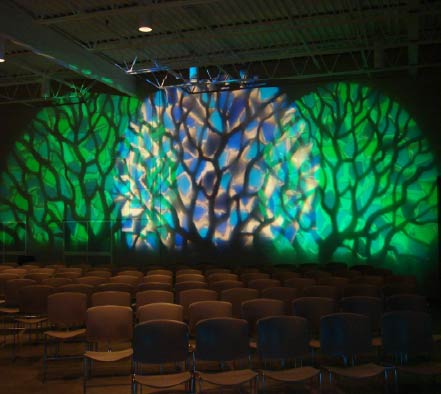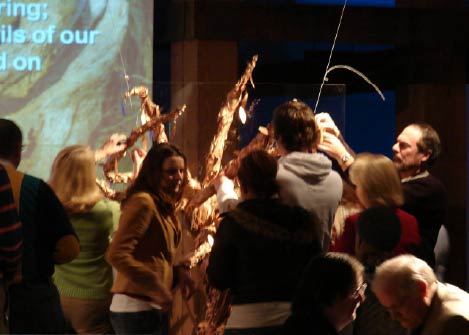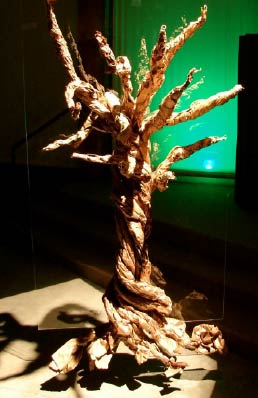Updated June, 2025
Every time our worship planning team faces another major season of the church year, the same nagging worry creeps into the back of our minds: Can we come up with any new creative ideas for this season? You’ve probably been there too (which is why you’re cruising this periodical for ideas, right?).
Every year I stick to my guns and assure the team that all we need to do is open ourselves up to the Holy Spirit, listen with curiosity to the pastor’s ideas for the next sermon or series, and be faithful in collaboration.
The Meeting
Here’s how our Lent/Easter brainstorming and planning meeting unfolds.
After a time of prayer, the pastor introduces the concept of the service, in this case a series called “Living the Resurrection.” He explains the scriptural context and offers his own personal narrative and other stories. The ideas for this Lent/Easter series center on Jesus as the way to new life; only in Jesus is our life fulfilled and complete. The rest of us begin to think of ways we can relate to what is being shared. We think of stories and images that support or refine or even challenge the conversation. And as is true of any gathering of creative people, that conversation may or may not always be on topic (which is why every group of artists needs a good coach)!
In this case, one of those seemingly “loose” topics is an analogy for one of the points in the sermon series that pertains to a tree. Specifically, Romans 11:17 mentions the wild olive. From there, one of the big dreamers in our group suggests that we get dozens of olive tree saplings to “place strategically around the church.” Another chimes in, “We should have a master gardener come and demonstrate grafting!”
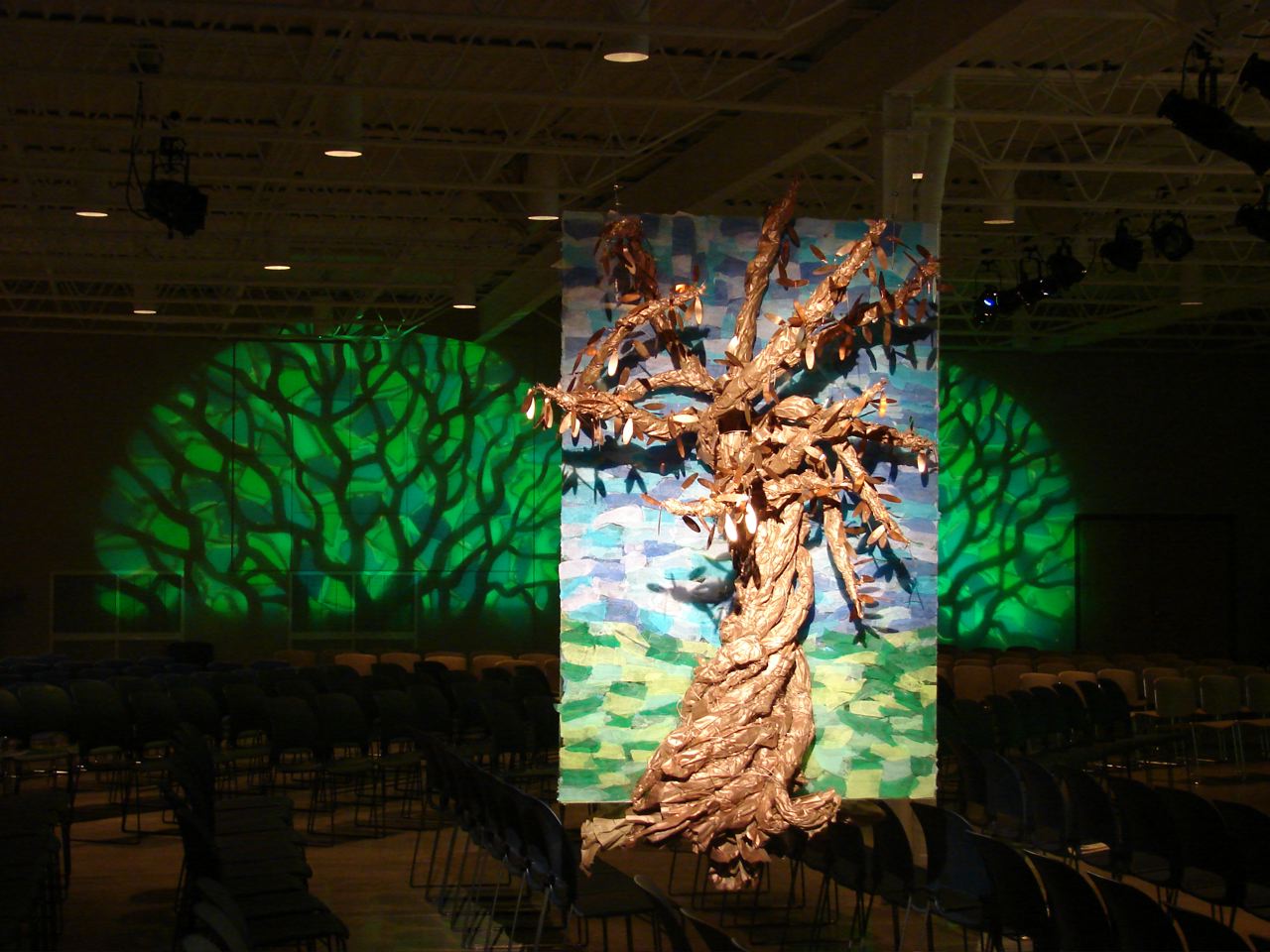
In the meantime, one of the research-lovers on the team looks up the olive tree in a book of common Christian symbols. She begins to read about all the symbolism related to the olive, the olive branch, and the olive tree. This engaging and representative visual and metaphoric symbol for the series captures our imagination, and we leave the meeting with various research, networking, and shopping assignments.
When we reconvene a few days later, it’s clear that transporting a full-grown olive tree from Jerusalem to be our focal point is not a realistic option. (Artists do need to dream, but that’s another conversation!) We decide instead to create our own interpretation of an authentic olive tree. So we came up with the following plan.
The Plan
For the sake of accessibility, balance, and impact, we chose to create two halves of a tree in the following manner:
- For each half, we cut twelve sections of bendable copper tubing into lengths of 8 to 12 feet (2.5 to 4 meters) each.
- Next, we tightly wrapped each tube with brown rolled craft paper, securing it with medium-gauge wire.
- We clumped these paper-wrapped copper tubes together, secured them with a little more medium-gauge wire and then, for lack of a better word, man-handled the tubes into a twisted column.
- The bendable copper tubing nicely held its shape and also allowed us to adjust the twisted lengths into “branches” at the top and “roots” at the bottom.
- For ease of display and support, we mounted each tree half onto a 4 x 8 foot (1.25 x 2.5 meter) sheet of 3/8-inch Plexiglas by drilling holes in the Plexiglas and then securing the tree to it with more wire. Drilling holes in the top of the Plexiglas sheet enabled us to hang the two halves with some cable. The clear Plexiglas also enabled us to achieve some great backlighting.
- On Easter Sunday the two halves of the tree were bound together to create one “360-degree” tree.
-
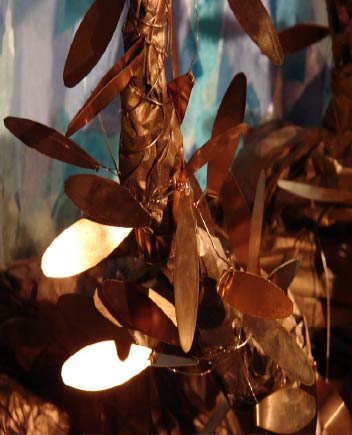
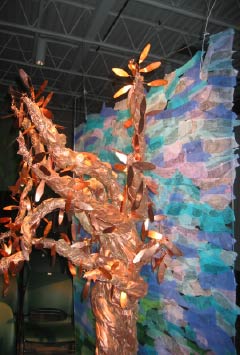
The Lighting
Meanwhile, during the weeks when the two tree halves were being prepared, another team member researched the many choices available through theater lighting supply companies for inexpensive, laser-cut metal discs (called GOBOs) that could be placed into our lighting fixtures to “throw” silhouette images of trees on the walls surrounding the worship space. In addition, our lighting fixtures also accept color discs. So we were able to achieve several tree representations, from barren to full of life.
The “Interactives”
With the lighting designed and the tree halves in place, we were ready for the congregation to look, wonder, touch, and interact with the central metaphor of the series. We really try to employ all of the senses in our planning so as to deepen people’s memory of the message. Often we like to create opportunities for people to actually get out of their seat during worship and participate in some tactile or communal action, which we call “interactives.” The main interactives each person could experience with the tree are listed on the chart above; among them were grafting stems of copper leaves onto the branches (during the sermon using Romans 11:17) and then decoupaging torn paper tissue to the back side of the Plexiglas (during the sermon on Christ’s love for us motivating us to love others “into” the big picture of God’s kingdom).

